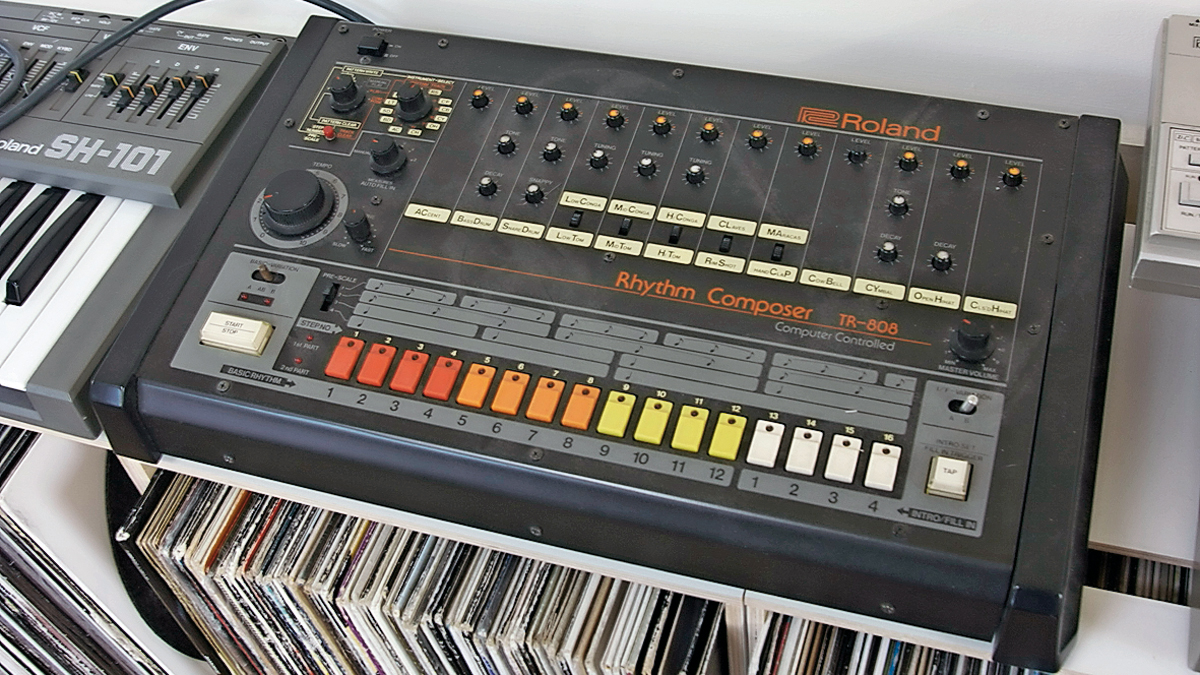4 ways to process a Roland TR-808 bass drum
Don't let your 808 get lost in the mix

Often used as either a kick, a bass, or a combined kick-and-bass in many genres, the TR-808 bass drum is undoubtedly the most recognisable (and possibly overused) electronic kick sound of all time. During an era where kick drums were designed to emulate the midrange punch of acoustic sounds, the 808 kick's sheer subsonic power shook sound systems in previously unheard ways - and still does to this day.
But exactly how does the TR-808 synthesize its famous bass drum? "The 808 kick is effectively a resonating circuit," explain Roland. "This circuit's time constant determines its frequency and decay time. If accent is present, the oscillation frequency is doubled for the duration of half a waveform cycle of an 'un-accented' kick's frequency - making accented kicks 'punchier'."
While the TR-808 bass drum can't be transposed directly on the hardware, producers discovered a new way to fill the low-end of a mix. By sampling a single note, then playing this note across the keyboard, the sound can be used as a relentless barrage of pitched bass notes - a technique which has become the centrepiece of genres such as hip-hop, RnB, juke, trap, jungle and drum 'n' bass.
When working with your own '808' - hip-hop's colloquial term for the famous bass drum - be aware that the sound will completely dominate the low-end of a mix, so allocate low-end space by employing adequate high-pass filtering throughout your other track elements. Check your mix on smaller systems too (earbuds, laptops and phones) to ensure sufficient harmonic presence; there's nothing worse than programming a bass-heavy 808 in the studio only to hear it disappear on consumer-grade speakers.
1. Careful compression
An 808 bass drum's weight lies in its decay tail. Devote care and attention to your sound's volume envelope, and apply careful compression.
2. Tuning
Be sure to tune an 808 kick sample to the key of your track. Use a tuner plug-in, play an initialised synth patch alongside as you tune, or even smash the raw sound through a saturation plug-in to >decipher its key.
3. Front-end punch
The 808 kick's attack is rather thin. Try using a punchier kick focused around 80-100Hz to provide the front-end punch, and gently sidechain the 808 layer against it.
Get the MusicRadar Newsletter
Want all the hottest music and gear news, reviews, deals, features and more, direct to your inbox? Sign up here.
4. Saturation
Gentle saturation is great for exaggerating an 808 kick's low mid harmonics. To keep the raw sound intact, send it to a buss and use a linear phase EQ to isolate the areas you want to accentuate before applying drive in parallel.
Future Music is the number one magazine for today's producers. Packed with technique and technology we'll help you make great new music. All-access artist interviews, in-depth gear reviews, essential production tutorials and much more. Every marvellous monthly edition features reliable reviews of the latest and greatest hardware and software technology and techniques, unparalleled advice, in-depth interviews, sensational free samples and so much more to improve the experience and outcome of your music-making.










